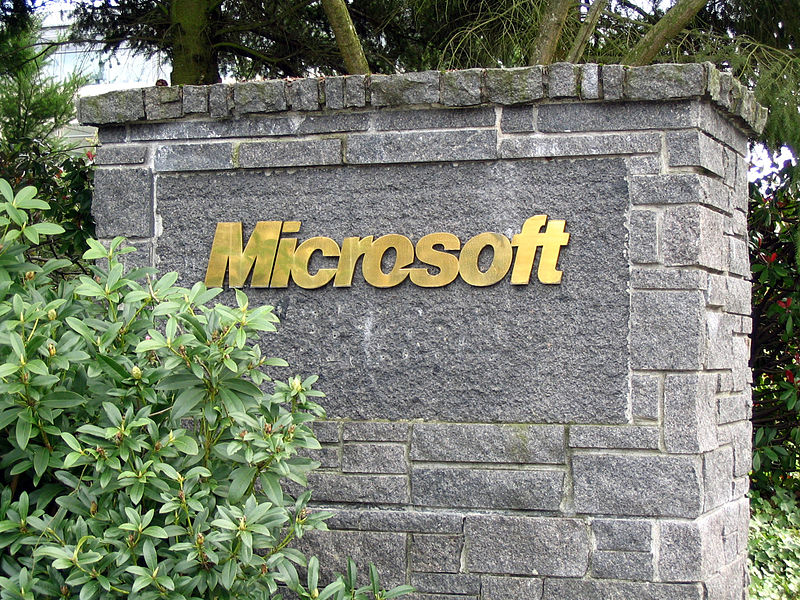1985–1995: Windows and Office

Ireland became home to one of Microsoft's international production facilities in 1985, and on November 20 Microsoft released its first retail version of Microsoft Windows (Windows 1.0), originally a graphical extension for its MS-DOS operating system. In August, Microsoft and IBM partnered in the development of a different operating system called OS/2. OS/2 was marketed in connection with a new hardware design proprietary to IBM, the PS/2. On February 16, 1986, Microsoft relocated their headquarters to a corporate office campus in Redmond, Washington. Around one month later, on March 13, the company went public with an IPO, raising US$61 million at US$21.00 per share. By the end of the trading day, the price had risen to US$28.00. In 1987, Microsoft eventually released their first version of OS/2 to OEMs. By then the company was the world's largest producer of software for personal computers—ahead of former leader Lotus Development—and published the three most-popular Macintosh business applications. That year the company purchased Forethought, the developer of PowerPoint and Microsoft's first major software acquisition on the 30th July 1987.
Meanwhile, Microsoft began introducing its most prominent office products. Microsoft Works, an integrated office program which combined features typically found in a word processor, spreadsheet, database and other office applications, saw its first release as an application for the Apple Macintosh towards the end of 1986. Microsoft Works would later be sold with other Microsoft products including Microsoft Word and Microsoft Bookshelf, a reference collection introduced in 1987 that was the company's first CD-ROM product. Later, on August 8, 1989, Microsoft introduced its most successful office product, Microsoft Office. Unlike the model of Microsoft Works, Microsoft Office was a bundle of separate office productivity applications, such as Microsoft Word, Microsoft Excel and so forth. While Microsoft Word and Microsoft Office were mostly developed internally, Microsoft also continued its trend of rebranding products from other companies, such as Microsoft SQL Server on January 13, 1988, a relational database management system for companies that was based on technology licensed from Sybase.
On May 22, 1990, Microsoft launched Windows 3.0. The new version of Microsoft's operating system boasted new features such as streamlined graphic user interface GUI and improved protected mode ability for the Intel 386 processor; it sold over 100,000 copies in two weeks. Windows at the time generated more revenue for Microsoft than OS/2, and the company decided to move more resources from OS/2 to Windows. In an internal memo to Microsoft employees on May 16, 1991, Bill Gates announced that the OS/2 partnership was over, and that Microsoft would henceforth focus its platform efforts on Windows and the Windows NT kernel. Some people, especially developers who had ignored Windows and committed most of their resources to OS/2, were taken by surprise, and accused Microsoft of deception. This changeover from OS/2 was frequently referred to in the industry as "the head-fake". In the recent years, the popularity of OS/2 declined, and Windows quickly became the favored PC platform. 1991 also marked the founding of Microsoft Research, an organization in Microsoft for researching computer science subjects, and Microsoft Visual Basic, a popular development product for companies and individuals.
During the transition from MS-DOS to Windows, the success of Microsoft's product Microsoft Office allowed the company to gain ground on application-software competitors, such as WordPerfect and Lotus 1-2-3. Novell, an owner of WordPerfect for a time, alleged that Microsoft used its inside knowledge of the DOS and Windows kernels and of undocumented Application Programming Interface features to make Office perform better than its competitors. Eventually, Microsoft Office became the dominant business suite, with a market share far exceeding that of its competitors. In March 1992, Microsoft released Windows 3.1 along with its first promotional campaign on TV; the software sold over three million copies in its first two months on the market. In October, Windows for Workgroups 3.1 was released with integrated networking abilities such as peer-to-peer file and printing sharing. In November, Microsoft released the first version of their popular database software Microsoft Access.
By 1993, Windows had become the most widely used GUI operating system in the world. Fortune Magazine named Microsoft as the "1993 Most Innovative Company Operating in the U.S." The year also marked the end of a five-year copyright infringement legal case brought by Apple Computer, dubbed Apple Computer, Inc. v. Microsoft Corp., in which the ruling was in Microsoft's favor. Microsoft also released Windows for Workgroups 3.11, a new version of the consumer line of Windows, and Windows NT 3.1, a server-based operating system with a similar user interface to consumer versions of the operating system, but with an entirely different kernel. As part of its strategy to broaden its business, Microsoft released Microsoft Encarta on March 22, 1993, the first encyclopedia designed to run on a computer. Soon after, the Microsoft Home brand was introduced – encompassing Microsoft's new multimedia applications for Windows 3.x., Microsoft changed its slogan to "Where do you want to go today?" in 1994 as part of an attempt to appeal to nontechnical audiences in a US$100 million advertising campaign.





0 comments
Sign in or create a free account